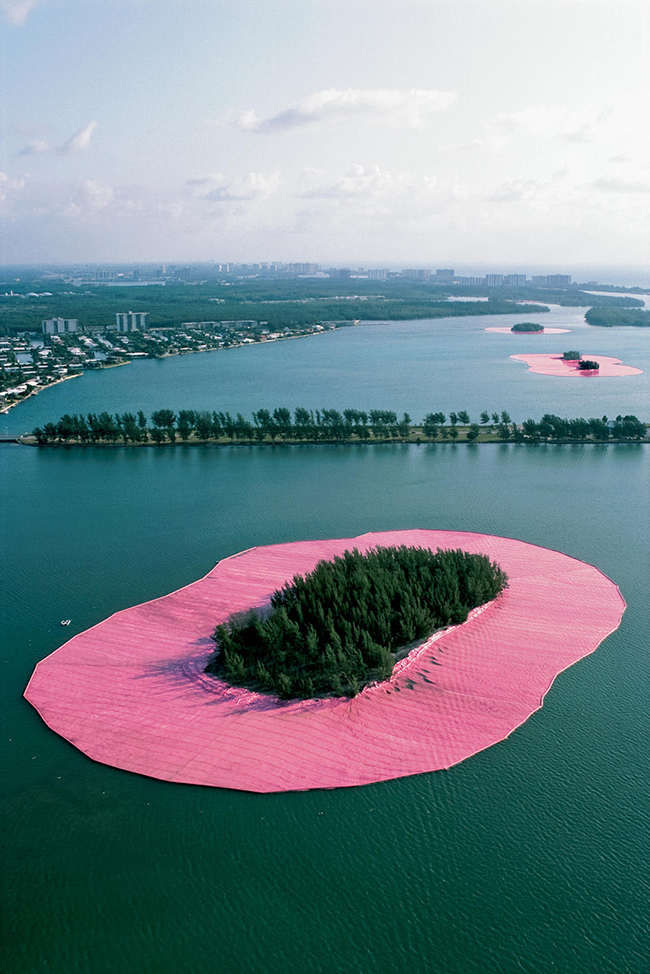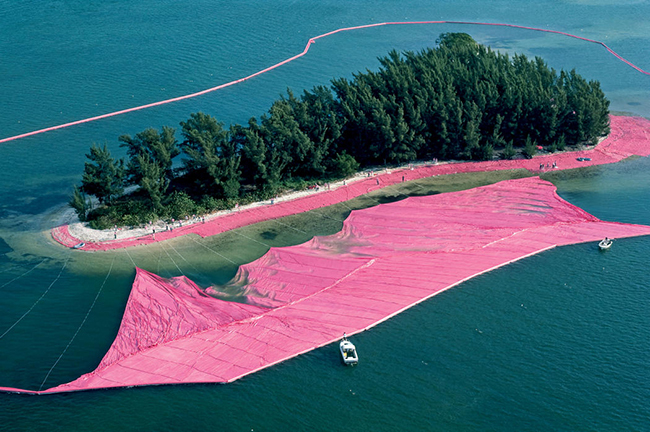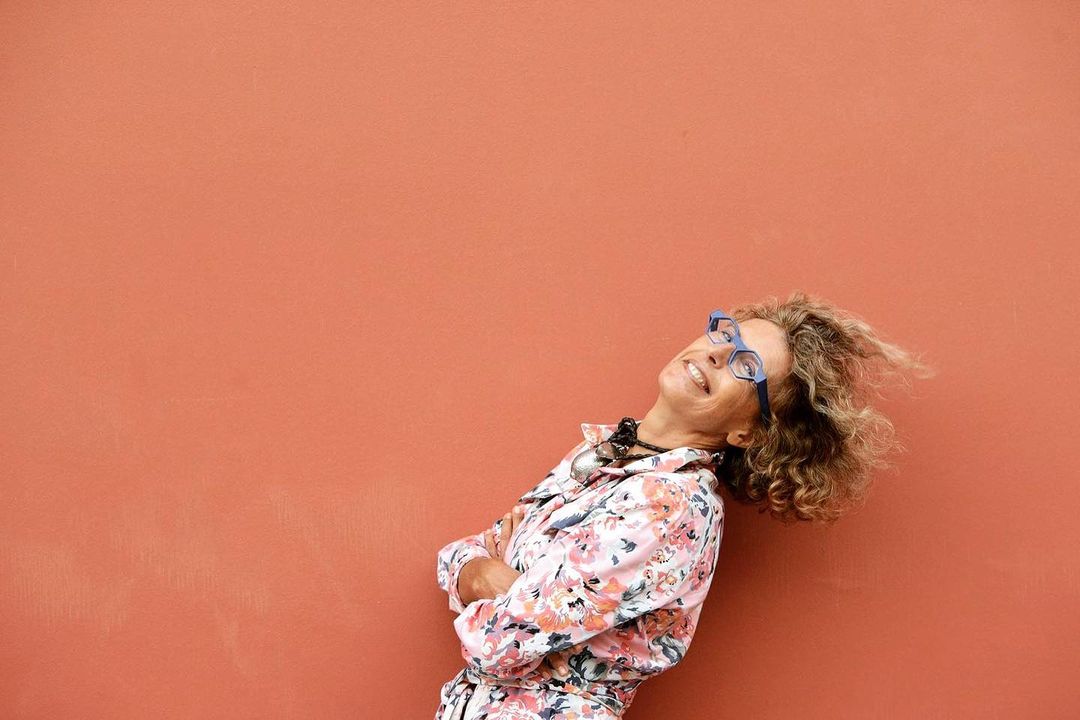There is an unmistakable magic when two architectures uniquely connect. Where aesthetics represents a mere tangible motif enveloping the creative heart, bringing the past back to the present and vice versa, to look towards a future filled with sensorial wonder. Walking, protecting and respecting the environment. Placing emphasis on whom it truly belongs to: nature.
Here at The Decorative Surfaces we wanted to look at two sublime projects. Although they connect to one another, they do so beyond the visual sense, ensuring that the bonds between them transcend any tangible element. It is through ethereal interpretation where we can truly recreate a world that establishes links between art and architecture, and between urban installation and Land Art.
We take a marvellous architectural project such as the Patio Kindergarten in Beijing, China (MAD Architects, 2020) and look at its true artistic connection to the Surrounded Islands in Miami, Florida (Christo and Jeanne Claude, 1980-83).
How can two projects so distant in time and uses offer similar interpretations?
Incorporating life
Submission to nature is reflected in the renovation of the Patio Kindergarten (Beijing, China). Designed by Mad Architects—a studio renowned for its futuristic projects through a contemporary reworking of the eastern spirit of nature.
At Kindergarten, Mad has created a renovated design for a modern 1990s building with a traditional 400-year-old patio. The open-air playground spectacularly conserves the historical and natural setting of the area. In this vein, the original patio from 1725 is protected from the new in a sublime, magical mise-en-scène. By incorporating a schematic design, the vegetation encircles, envelops and enhances three ancient trees that were already in place.
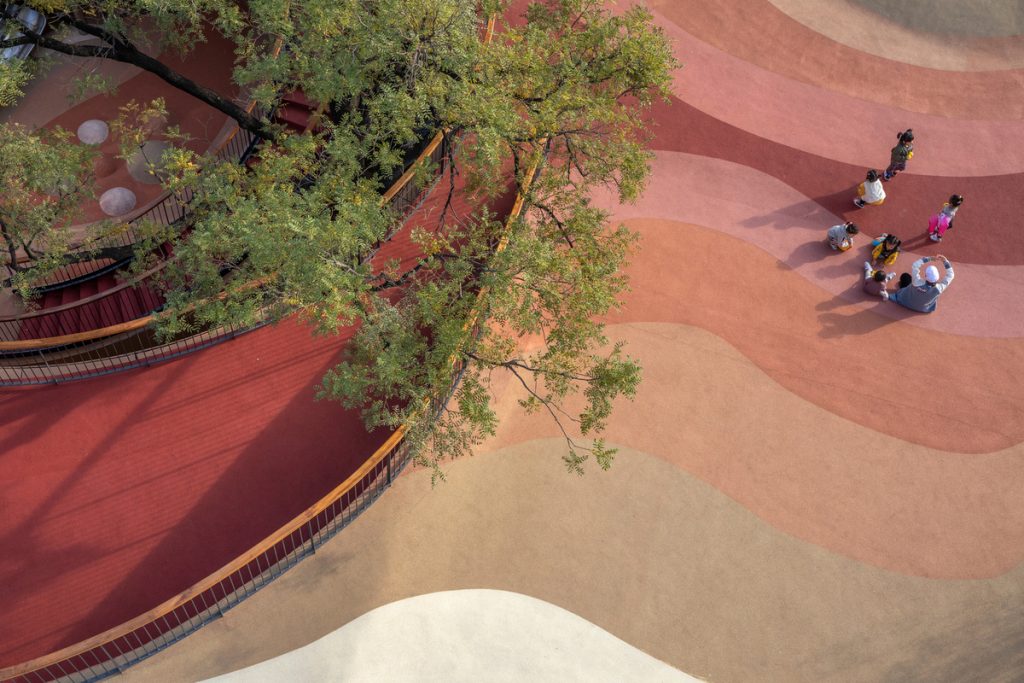
This opening-up to life is also clearly reflected in the monumental open-air projects created by Christo and Jeanne Claude. In this sense, it transcends the limits of dated artistic disciplines. At Surrounded Islands (1980-1983), the woven envelope offers a powerful and safe perspective of space. Here the interpretation discerns a submission to nature that Mad Architects also project through their design: trees that ultimately represent life.
Undulating narratives
The dynamic rooftop design is unmistakable at the Patio Kindergarten. It responds to an incandescent interpretation of freedom and imagination for over 400 children. This offers a learning space that delves deep into understanding time and space. The southwestern edge houses an undulating surface of hills and plains that form a high and low landscape. In this sense, the rise and fall of the hills on the patio combine with the floating dynamic rooftops. In turn, this provides a space for the unknown, without overlooking the purpose of the design itself.
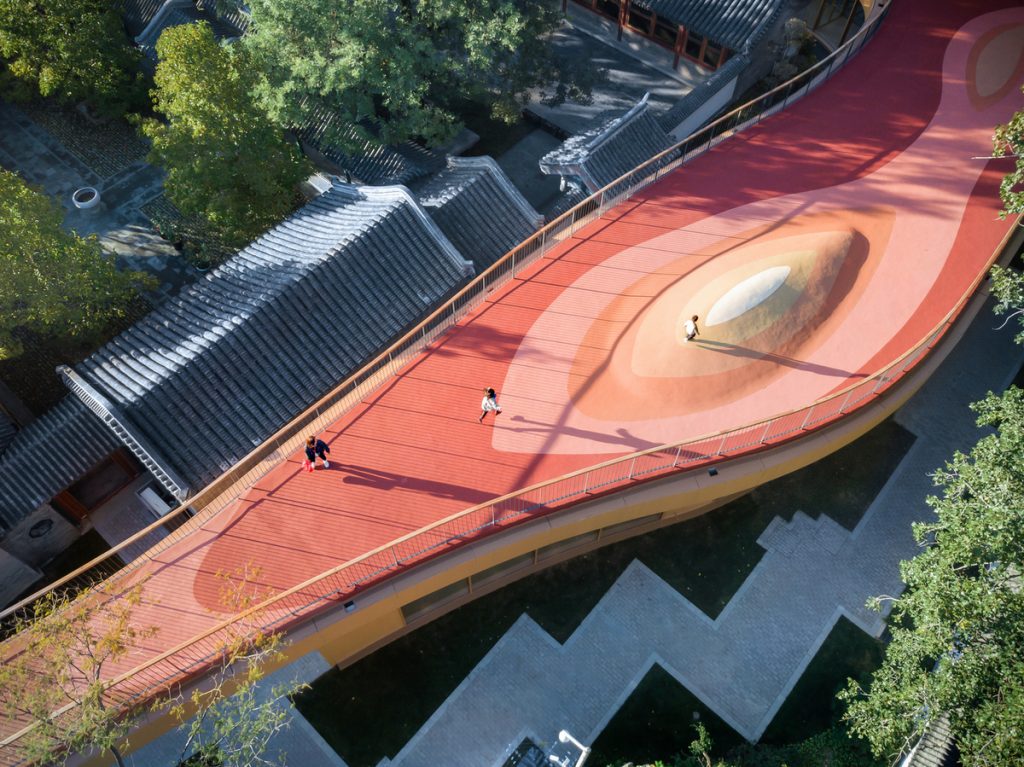
This symbol of freedom can also be appreciated in the pink fabric surrounding the 11 small islands in Miami at Surrounded Islands. This art installation was designed as a poetic gesture and contains undulations that provide a similar narrative to the Patio Kindergarten. The dynamic responds to the fleetingness in the work of Christo and Jeanne Claude. As the freedom of the rippling movement of the water enables us to perceive a space dedicated to reflection. This happens through changing morphology, integrating the unknown and uncertain.
A bird’s-eye visual treat
The culmination of both designs can be perceived from the sky. After our close-up interpretation, this perspective draws us back to the visual similarity of both projects. The chromatic harmony of what is alive, the mix of undulations and a respect for life can be fully appreciated from a bird’s-eye view.
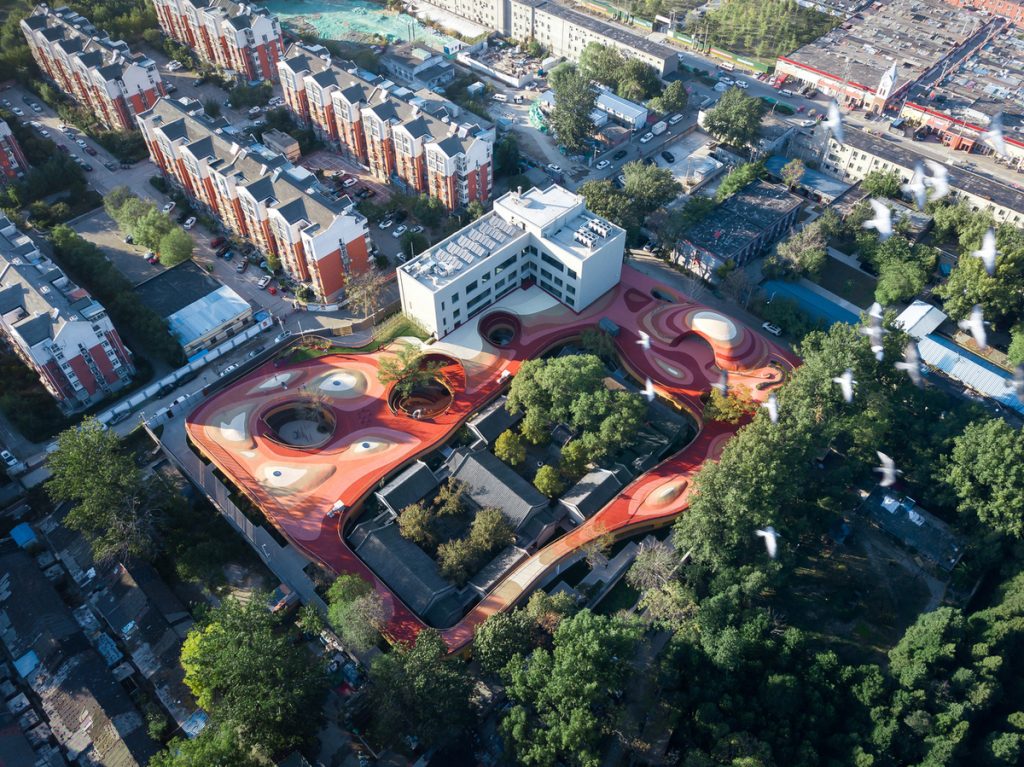
Aesthetics becomes tangible to nudge both works towards an artistic interpretation filled with perfect elements to stir consciousness. They take us back to the inherent freedom of nature and a respect for life through the innate innocence of childhood.

